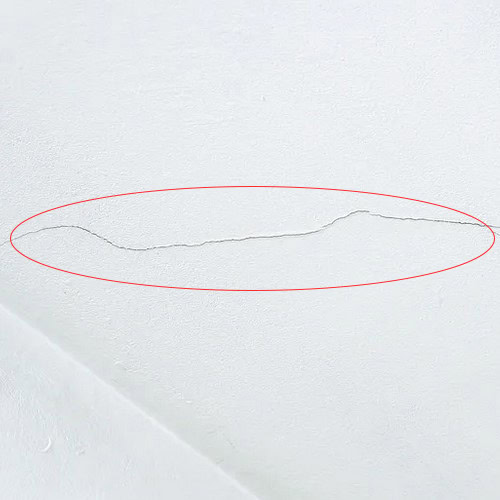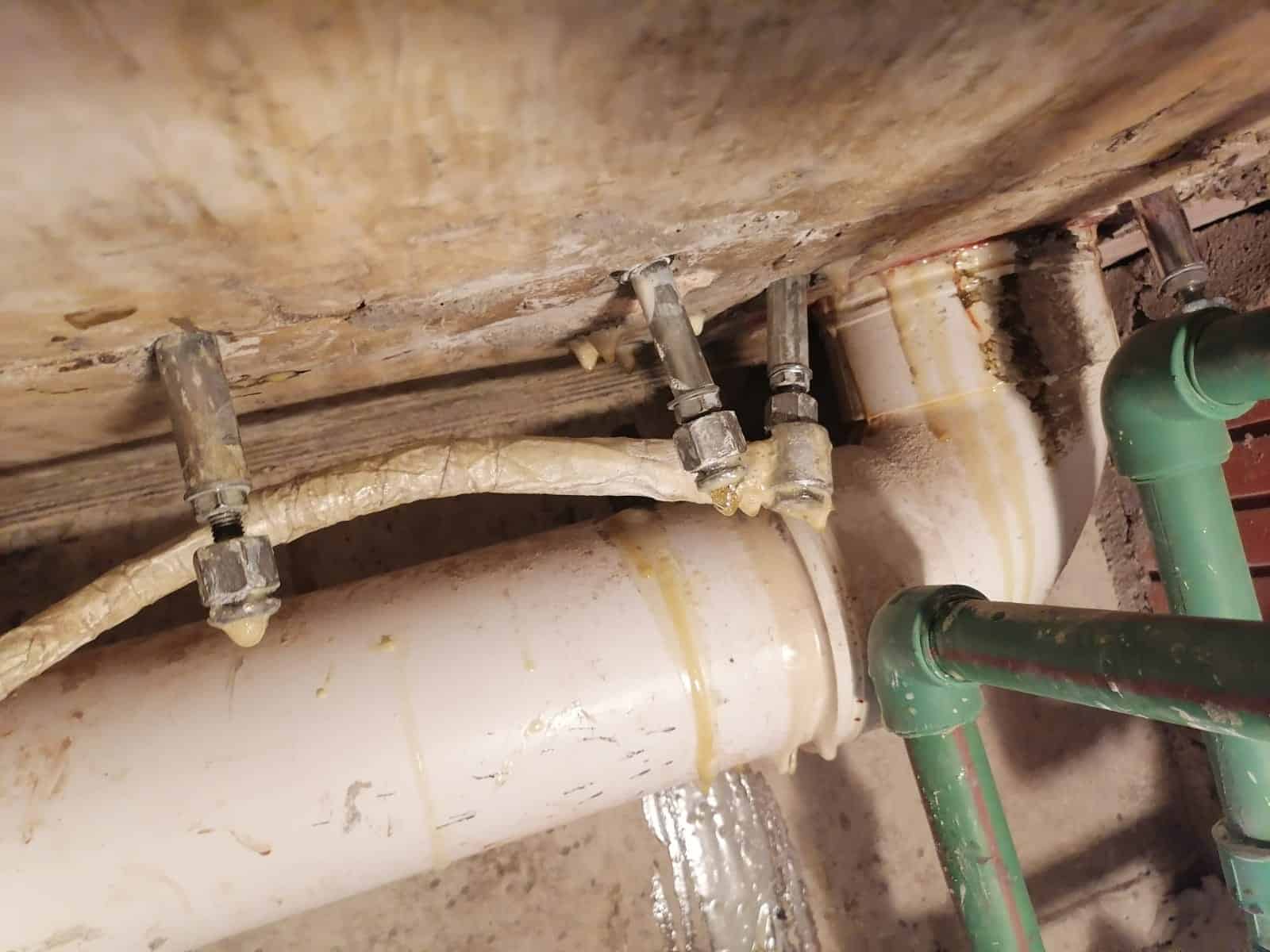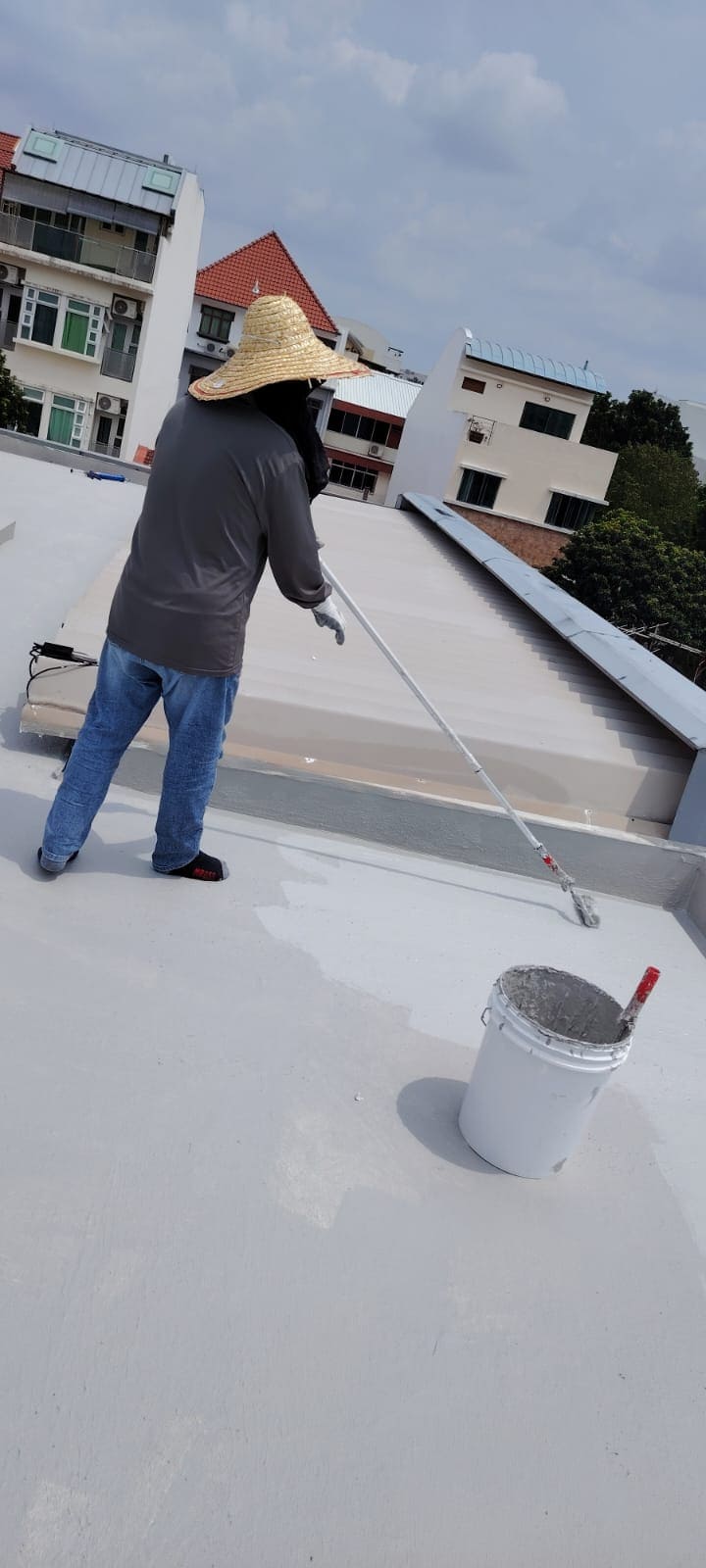Hairline cracks in the ceiling may seem like a minor issue, but in Singapore’s climate, they can quickly lead to significant problems if not addressed promptly. Water seepage through these cracks can cause structural damage, mold growth, and costly repairs. Therefore, it’s crucial to take a proactive approach to repair and waterproofing.
In Singapore, where the humid tropical climate and frequent rainfall play significant roles, homeowners often encounter various structural issues within their properties. One of the more common yet potentially problematic issues is the occurrence of hairline cracks in ceilings. These seemingly minor cracks can lead to serious problems, including water leakage and seepage, if not addressed promptly.
Hairline cracks may lead to leaks, and the best solutions for fixing them is particularly through waterproofing methods that are essential in the Singapore.
Hairline cracks are extremely thin cracks that often appear on ceilings and walls. While they may initially seem like minor cosmetic imperfections, they can sometimes indicate deeper issues within the structure of the building. One of the most concerning questions for homeowners is whether these cracks can leak.
In many cases, hairline cracks can indeed lead to leaks, especially if they form in areas exposed to moisture, such as the bathroom ceiling or external walls. The situation is exacerbated during the rainy season when the cracks can become conduits for water, causing ceiling leaks that may go unnoticed until they worsen.
How do Hairline Cracks Occur?
Understanding the causes of hairline cracks is essential for preventing and addressing them effectively. Several factors can lead to the formation of these cracks in Singaporean homes:
Thermal Expansion and Contraction:
Singapore’s warm climate leads to regular expansion and contraction of building materials. Over time, this can cause stress on the walls and ceilings, resulting in hairline cracks.
Structural Movement:
Buildings naturally settle over time. This settling process can lead to minor shifts in the structure, causing hairline cracks to appear, especially in older buildings.
Poor Construction Practices:
In some cases, substandard construction materials or techniques can result in weaker structures that are more prone to cracking.
Water Ingress:
Water seepage from leaky roofs or poorly sealed windows can cause moisture to accumulate behind walls and ceilings. This moisture can weaken the material and lead to cracking.
Drying Shrinkage:
As concrete or plaster dries, it shrinks slightly. If this shrinkage is uneven, it can cause hairline cracks to form, especially if the material is applied too thickly.
Hairline Cracks
Hairline cracks might seem trivial at first glance, but they should not be ignored. In Singapore, where high humidity and frequent rainfall are the norm, these cracks can quickly become a pathway for water ingress, leading to more severe issues like water seepage and ceiling leaks.
The presence of hairline cracks could also indicate underlying structural problems, especially if they appear in multiple locations or spread over time. In such cases, it is essential to assess the situation carefully and consider professional intervention. Ignoring these cracks can result in costly repairs down the line, particularly if water damage occurs.
A small crack in the ceiling might seem insignificant, but it can act as a channel for water to enter, especially in a humid environment like Singapore. Several factors can contribute to a ceiling leak through a small crack:
1. Water Seepage:
During heavy rainfall, water can penetrate through even the smallest cracks, leading to leaks in the ceiling. This is often the case in older buildings where waterproofing might have deteriorated.
2. Condensation:
In air-conditioned spaces, condensation can form on the ceiling. If there are hairline cracks, the moisture can seep through, leading to damp spots and leaks.
3. Capillary Action:
Water can travel through tiny cracks by capillary action, especially if the crack is in an area where water is regularly present, such as near a bathroom or kitchen.
4. Deterioration of Waterproofing:
If the waterproofing layer above the ceiling has deteriorated, water can easily penetrate through cracks and cause leaks.
The best way to fix hairline cracks in the ceiling depends on the underlying cause. If the crack is purely cosmetic, a simple fill-and-paint approach may suffice.
Applying a waterproofing membrane over the ceiling can provide an additional layer of protection against water damage. This is especially useful in areas prone to leaks, such as bathrooms or kitchens. If the crack was caused by water ingress, consider applying a waterproofing solution to the area to prevent future issues. PU injection grouting is a popular method in Singapore for sealing cracks and preventing leaks
In Singapore, repairs for hairline cracks in ceilings, especially those associated with water seepage, are typically handled by specialized waterproofing contractors.
Waterproofing contractors specialize in preventing and repairing water-related issues in buildings. They are well-equipped to handle problems like hairline cracks that lead to ceiling or wall leaks. These contractors can assess the extent of the damage, identify the source of water seepage, and recommend the best waterproofing solutions.
PU Injection Grouting
This is a highly effective method for sealing hairline cracks that are caused by water seepage. PU injection involves injecting a polyurethane solution into the crack, which expands and seals the gap, preventing any further water ingress.
If the hairline crack is particularly associated with water seepage, PU (polyurethane) grouting specialists may be the best choice. They focus specifically on injecting PU foam into cracks to seal them and prevent further water ingress.
Polyurethane (PU) injection grouting is a highly effective method used in Singapore for addressing water leakage issues in various structures, including residential buildings, commercial properties, and infrastructure projects. This technique involves injecting a liquid polyurethane resin into cracks, joints, or voids within concrete structures. The resin reacts with water to form a foam that expands and hardens, effectively sealing the leaks and preventing water ingress.
One of the main advantages of PU injection grouting is its versatility. It can be applied to both active and passive leaks, making it suitable for a wide range of waterproofing challenges. Whether it’s a basement wall, a ceiling, or a retaining wall, PU injection can be used to stop water infiltration quickly and efficiently. The process is also minimally invasive, requiring little to no demolition, which reduces disruption and saves time and costs associated with more extensive repair methods.
PU injection grouting offers a reliable solution, particularly for structures that are difficult to waterproof using traditional methods. The polyurethane resin’s ability to expand and fill even the smallest cracks ensures a comprehensive seal, which is crucial in preventing further water damage.
Additionally, PU injection grouting is valued for its long-lasting effectiveness. Once the resin has cured, it forms a durable, flexible seal that can withstand the pressures of water and the natural movements of the building structure. This durability is particularly important in Singapore’s environment, where fluctuations in temperature and humidity can cause materials to expand and contract, leading to potential leaks if not properly addressed.
Overall, PU injection grouting is an essential tool in the waterproofing industry in Singapore. Its ability to provide a fast, cost-effective, and durable solution to water leakage problems makes it a preferred choice for both contractors and property owners looking to protect their investments from the damaging effects of water ingress.
Waterproofing Membranes:
Applying a waterproofing membrane over the ceiling can provide an additional layer of protection against water damage. This is especially useful in areas prone to leaks, such as bathrooms or kitchens.
Some companies specialize in the repair and maintenance of ceilings and walls. They can address issues like hairline cracks, water damage, and other structural concerns. These experts are often called in to fix the surface-level damage and restore the appearance of the ceiling or wall.
Waterproofing membranes are a widely used and highly effective solution for preventing water ingress in various structures across Singapore. These membranes are thin layers of waterproof material that are applied to surfaces like roofs, walls, basements, and balconies to create a barrier against water penetration. They come in different forms, including liquid-applied membranes, sheet membranes, and self-adhesive membranes, each suited to specific applications and conditions.
In Singapore, where the tropical climate brings frequent and intense rainfall, the need for robust waterproofing solutions is paramount. Waterproofing membranes provide an essential defense against water infiltration, which can cause significant damage to buildings over time. By creating a continuous, seamless barrier, these membranes ensure that water cannot seep through cracks, joints, or porous surfaces, effectively protecting the structural integrity of a building.
One of the key advantages of waterproofing membranes is their versatility. They can be used in both new construction projects and existing structures, offering a reliable solution for a variety of waterproofing needs. Liquid-applied membranes, for example, can be easily applied to complex shapes and details, making them ideal for areas with intricate designs or difficult access. Sheet membranes, on the other hand, are often preferred for their consistent thickness and durability, providing a strong, long-lasting barrier.
In addition to their waterproofing capabilities, these membranes also contribute to the overall longevity of a building. By preventing water ingress, they reduce the risk of problems such as mold growth, corrosion of reinforcement, and deterioration of building materials. This is particularly important in Singapore, where high humidity levels can exacerbate these issues, leading to costly repairs and maintenance if not properly addressed.
Waterproofing membranes are also an eco-friendly option, as many modern membranes are designed to be resistant to chemicals and UV rays, extending their lifespan and reducing the need for frequent replacements. This long-term durability not only saves costs but also minimizes the environmental impact associated with maintenance and repair activities.
Waterproofing membranes play a critical role in safeguarding buildings in Singapore from water damage. Their ability to provide a durable, flexible, and effective barrier against water ingress makes them an indispensable component of any comprehensive waterproofing strategy, ensuring that structures remain dry, safe, and structurally sound in the challenging tropical climate.
By selecting a reputable contractor and verifying their qualifications and experience, you can ensure effective and lasting solutions for water damage and waterproofing needs in your property.
Engaging a professional waterproofing contractor, especially one experienced in dealing with the specific challenges of Singaporean homes, is the best way to ensure that hairline cracks are properly addressed
Remember, when it comes to waterproofing and repairing hairline cracks, prevention is always better than cure. Regular inspections, prompt repairs, and effective waterproofing can save you from more significant headaches down the line. Don’t wait for a minor crack to turn into a major leak—take action today to protect your home.
SWC Construction is a top professional waterproofing contractor in Singapore, recognized for offering superior solutions to tackle all types of leak-related challenges. By taking a thorough and meticulous approach to waterproofing, we guarantee that every project is completed with the highest level of skill and care, ensuring clients enjoy lasting protection from water damage. This dedication to quality is evident in the many positive reviews from clients who praise our company for its dependable service, exceptional craftsmanship, and successful project results.
Reach out to SWC Construction today for:
- Tailored consultations to address your water leakage issues.
- Clear guidance on our effective PU Injection Grouting method.
- Expert advice on preventive maintenance to protect your home long-term.
Your home deserves top-notch protection, and we’re committed to delivering trusted water leakage repair services in Singapore. Don’t let water leakage affect your home’s safety and comfort—start your journey to a watertight solution today.
Call us at 8754 4058 to schedule your consultation. We are eager to help maintain the integrity of your home. Thank you for trusting us with your water leakage repair needs.





